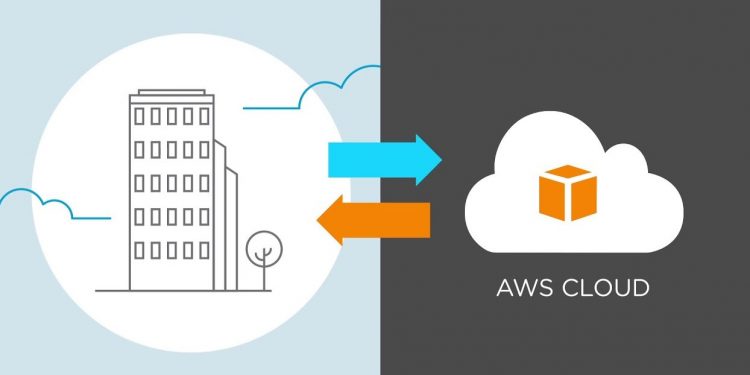If your business is ready to expand but you feel constrained by your physical situation, then cloud scaling is an excellent solution for you. Cloud scaling is a powerful method of increasing how much you get done by digitally simplifying tasks.
This means that scaling your business through the cloud is incredibly cost-effective. You can increase your productivity without having to increase overhead or labor expenses.
If you’re not familiar with the cloud or its scalability, then it might be overwhelming when trying to determine what solutions are best for you. While cloud scaling is valuable, you can’t use a product that you don’t understand. To provide some clarity, we’ll break down how cloud scaling works below!
What Is Cloud Scaling?
First, you need to understand what cloud scaling is. Scaling through the cloud is the ability to adjust IT resources to suit whatever a business’ unique needs are at a given time. This is usually done by either adjusting storage space and processing power or adding servers.
As you likely know, business demand can vary greatly depending on the time of the year. It can be difficult to adequately prepare for months with low demand and high demand simultaneously.
This is where cloud scaling can be very useful. You can use the cloud to modify how many network resources you need depending on your demand. Better yet, you only have to pay for the resources you are using so waste is minimal.
Cloud Elasticity
A similar term when it comes to increasing network capacity is cloud elasticity. This is very similar to cloud scaling, but its purpose and length of use are what differentiate it.
While cloud scaling is used to address ongoing changes in demand, cloud elasticity is used to meet more spontaneous changes in demand. It is typically used by smaller businesses that are experiencing unusual spikes in how many clients they are receiving.
With this in mind, cloud elasticity is a poor long-term strategy for addressing demand and will only result in high costs and inefficient performance if used extensively. On the other hand, cloud scaling is a sustainable long-term approach to meeting changes in demand.
Vertical Scaling
Typically the first approach to cloud scaling involves vertical scaling. This method entails directly increasing network resources to improve output without adding a server. Instead, additions are more minor in the form of extra storage drives and CPU cores to boost capacity and power.
This means that vertical scaling is highly accessible and appealing for a low-commitment approach to increasing how much you can get done. Making changes to your network infrastructure can be difficult and costly, which is what vertical scaling achieves.
An easy way to envision this is choosing to upgrade the physical parts of your computer rather than buying a new computer entirely. With vertical scaling, you focus on optimizing what you already have.
Horizontal Scaling
The other approach to cloud scaling is horizontal scaling. In this strategy, the network is boosted by adding additional servers and greatly increasing output capacity. As a result, horizontal scaling is a far more powerful approach because the size factor is much larger.
Imagine that your data is cars and your network channels are lanes of traffic. When your data/cars have just one lane of traffic, this is their limit. If you add another lane, you suddenly double the capacity and allow much more to get through.
You are effectively adding new lanes of traffic for your data to travel, minimizing the strain on existing channels and increasing your total capabilities. This means horizontal scaling focuses on changing and adding to your network infrastructure.
Diagonal Scaling
While vertical and horizontal scaling are different approaches to attaining the same goal, they can also be used simultaneously. This is called diagonal scaling and it is a highly efficient way of managing your network resources.
When you are cloud scaling diagonally, your network will use existing infrastructure and resources to handle incoming demand. When that demand exceeds current capabilities, the network will then add additional servers as necessary to meet new demand levels.
This approach is intuitive and effectively keeps your network where it needs to be at any given time without constant oversight from you.
Cloud Scaling Your Business
With all of this information put together, you now might be wondering if cloud scaling is worth it for your business.
Every business has unique needs depending on the field you operate in and the resulting nature and frequency of your clients. Take it a step further and how a business operates also affects their network traffic.
With so many variables at play, the only question you need to answer is what you need from the cloud. If you know that your business is looking to grow and you need innovative solutions to meet this change, then cloud scaling will simplify the process.
Good implementation of cloud scaling will result in greater network performance, the flexibility to meet varying business needs, and the stability to ensure everything stays running smoothly.
Closing Thoughts
Cloud scaling is a cutting-edge approach to increasing your network capabilities. Your data needs and total traffic will likely vary depending on the time of year and you need to be ready to accommodate this.
This is easily achievable through the use of cloud scaling, which is the ability of your business to add IT resources to meet varying demand levels. It is different from cloud elasticity, which focuses on short-term issues that aren’t regular occurrences for smaller businesses.
When using cloud scaling, there are two strategies employed. The first is vertical scaling, which involves adding more CPU power and storage to increase capacity. Horizontal scaling is the other technique, which adds new servers to greatly boost capacity.
These paired together make diagonal scaling, which is the best way to be ready for any changes your business might need to make! If you need more network power and want the most cost-effective approach, then cloud scaling is your answer!
Follow Techdee for more!





